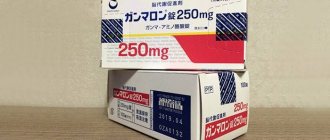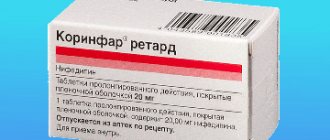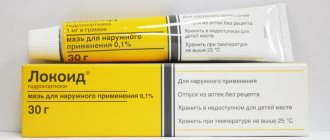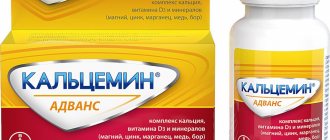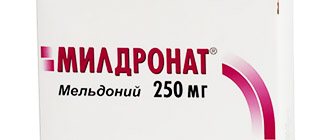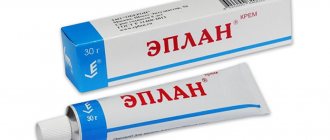In case of complicated infectious diseases, antibiotics are indicated. The pharmaceutical market offers a huge range of antibacterial drugs. The drug Cefotaxime is used in the treatment of both adults and children. From the article you will learn for what pathologies it is prescribed, in what dosage forms it is produced, and when it is prohibited for use.
Description of the drug
The antibiotic Cefotaxime is a representative of the third generation cephalosporin series. It has proven activity against gram-positive as well as gram-negative microorganisms that exhibit resistance to other antibiotics. It is characterized by rapid penetration into myocardial tissue, epidermis, bones, as well as the main body fluids (pleural, spinal).
Available only in crystal form for the production of a liquid substance intended for injection into a vein or gluteal muscle. The active substance is cefotaxime.
Pure white or slightly yellowish powder is packaged in 1 gram quantities in 10 ml bottles made of polymer or glass. Depending on the manufacturer, one pack may contain 1, 5 or 50 pieces, in addition there is an instruction. Cefotaxime is not available in tablet form.
Half an hour after the intramuscular injection, the maximum possible concentration is achieved. The bactericidal effect lasts 12 hours. The drug inhibits the proliferation of pathogenic microflora and completely eliminates the causative agent of the disease.
Ampoules are stored for 2 years from the date of release at a temperature of no more than 25°C. The prepared solutions are suitable for use within 24 hours when stored in the refrigerator, and at room temperature - only 12 hours. Combining one injection or dropper with other medications of similar effect is prohibited.
Cefotaxime
Anaphylactic reactions
The prescription of cephalosporins requires the collection of an allergic history (allergic diathesis, hypersensitivity reactions to β-lactam antibiotics).
If the patient develops a hypersensitivity reaction, treatment should be discontinued.
The use of cefotaxime is contraindicated in patients with a history of immediate hypersensitivity reaction to cephalosporins. If there is any doubt, the presence of a doctor during the first administration of the drug is mandatory, due to a possible anaphylactic reaction.
There is a known cross-allergy between cephalosporins and penicillins, which occurs in 5-10% of cases. Anaphylactic reactions that occur in this situation can be serious or even fatal.
In patients with a history of allergy to penicillins, the drug is used with extreme caution. The patient's condition should be carefully monitored when the drug is first administered due to a possible anaphylactic reaction.
If the first symptoms and signs of anaphylactic shock develop, you should immediately stop administering the drug. The patient should remain in a supine position with legs elevated. Slow intravenous administration of 0.1 mg (1 ml) of epinephrine (adrenaline) solution is indicated under control of pulse and blood pressure, as well as intravenous administration of plasma expanders, human albumin or balanced electrolyte solutions; subsequently - intravenous administration of glucocorticosteroids (for example, 250-1000 mg of hydrocortisone), once or, if necessary, repeatedly. Supportive therapeutic measures should be carried out: artificial ventilation, oxygen inhalation, administration of antihistamines.
Diseases caused by Clostridium difficile (eg, pseudomembranous colitis)
Diarrhea, especially severe and/or prolonged, developing during treatment or in the first weeks after the end of treatment with various antibiotics, especially broad-spectrum antibiotics, may be a symptom of a disease caused by Clostridium difficile, the most severe form of which is pseudomembranous colitis. The diagnosis of this rare but possibly fatal disease is confirmed endoscopically and/or histologically. The most important method for confirming the diagnosis of pseudomembranous colitis is the detection of Clostridium difficile toxins in the stool. If a diagnosis of pseudomembranous colitis is suspected, cefotaxime should be discontinued immediately and appropriate specific antibiotic therapy (eg, oral vancomycin or metronidazole) should be started immediately. Drugs that inhibit intestinal motility are contraindicated.
Encephalopathy
When using β-lactam antibiotics, including cefotaxime, there is an increased risk of developing encephalopathy (which may manifest as seizures, confusion, impaired consciousness, movement disorders), especially in cases of overdose or renal failure.
Use of lidocaine as a solvent
When using lidocaine as a solvent, it is necessary to take into account the information presented in the “Contraindications” section.
Injection rate
The rate of administration of the drug should be monitored (see section “Method of administration and dosage”).
Kidney failure
In case of renal failure, the dose should be adjusted depending on creatinine clearance (See section "Dosage and Administration").
Caution should be exercised when using cefotaxime and aminoglycosides simultaneously. Renal function should be monitored in all cases of combined use of cefotaxime with aminoglycosides, other nephrotoxic drugs, in elderly patients or with renal impairment.
Sodium content
In patients requiring sodium restriction, the sodium content of cefotaxime sodium salt (48.2 mg/g) should be taken into account.
Hematopoietic disorders
During treatment with cefotaxime, leukopenia, neutropenia and, more rarely, bone marrow hematopoietic failure, pancytopenia and agranulocytosis may develop.
If the course of treatment lasts more than 10 days, the number of blood cells should be monitored. If these blood parameters deviate from the norm, the drug should be discontinued.
Laboratory tests
During therapy with cephalosporins, a positive Coombs test may occur.
It is recommended to use glucose oxidase methods for determining the concentration of glucose in the blood, due to the development of false positive results when using nonspecific reagents.
Impact on the ability to drive vehicles and machinery
In case of development of such side effects as dizziness and encephalopathy (which can manifest itself as convulsions, confusion, disturbances of consciousness, movement disorders), patients should refrain from driving vehicles and operating machinery.
Indications for the use of Cefotaxime
Cefotaxime injections are prescribed for severe bacterial infections caused by sensitive microorganisms. The antibiotic has proven itself well in:
- Infectious diseases of the ENT organs - tonsillitis, otitis, sinusitis.
- Bacterial inflammation of the endocardium.
- Complications after surgical procedures and their prevention.
- Septicemia.
- Borreliosis.
- Pathologies of the respiratory system - acute bronchitis, pleurisy, pneumonia, abscesses.
- Chlamydia.
- Gonorrhea.
- Festering burns and wounds.
- Bacterial meningitis.
- Infections of the skeletal system, joints and soft tissues.
- Bacterial lesions of the urinary tract and kidneys.
Treatment is carried out both on an outpatient basis and in a hospital.
Instructions for use
The treatment regimen with Cefotaxime injections is selected taking into account the patient’s age, body weight and form of administration.
Intramuscularly: adults are prescribed 1 to 2 g of the substance, which is mixed with Lidocaine 1%. If injections are prescribed into a vein, then the same amount of antibiotic is combined with sterile water and diluted with a solvent to 10 ml. The medicine is administered for a long time - 3-4 minutes at intervals from 4 to 12 hours.
If the doctor has prescribed a course of systems, then the solution is prepared as follows: combine 2 g of Cefotaxime and 100 ml of sodium chloride. They dig for about an hour.
Instructions for use of Cefotaxime contain information on the maximum permissible dose per day - 12 g for adults, for pediatric patients weighing up to 50 kg - 180 mg per 1 kg.
For children under 2.5 years old, antibiotics are administered intravenously only. Children under 12 years of age are administered 50-100 mg per 1 kg of weight per day. Treatment is carried out in several doses at intervals of 6 to 12 hours. The typical dosage regimen for children over 12 years of age is 1 g every 12 hours.
Children born prematurely are prescribed 50-100 mg per 1 kg of weight per day, divided into three doses.
The duration of therapy is determined by the doctor, based on the severity of the disease, tolerability of treatment and existing pathologies. Minimum – 5 days. If there are problems with the kidneys, the dose is reduced.
The anesthetic used as a solvent is Lidocaine or Novocaine, since the injection is painful.
Cefotaxime
Anaphylactic reactions
The prescription of cephalosporins requires the collection of an allergic history (allergic diathesis, hypersensitivity reactions to beta-lactam antibiotics). If the patient develops a hypersensitivity reaction, treatment should be discontinued. The use of cefotaxime is contraindicated in patients with a history of immediate hypersensitivity reaction to cephalosporins. If there is any doubt, the presence of a doctor during the first administration of the drug is mandatory due to a possible anaphylactic reaction. Cross-allergy between cephalosporins and penicillins is known, which occurs in 5-10% of cases. Anaphylactic reactions that occur in this situation can be serious or even fatal. In patients with a history of allergy to penicillins, the drug is used with extreme caution. The patient's condition should be carefully monitored when the drug is first administered due to a possible anaphylactic reaction. If the first symptoms and signs of anaphylactic shock develop, you should immediately stop administering the drug. The patient should remain in a supine position with legs elevated. Slow intravenous administration of 0.1 mg (1 ml) epinephrine solution is indicated under control of pulse and blood pressure, as well as intravenous administration of plasma expanders, human albumin or balanced electrolyte solutions; subsequently - intravenous administration of glucocorticosteroids once or, if necessary, repeatedly. Supportive therapeutic measures should be carried out: artificial ventilation, oxygen inhalation, administration of antihistamines.
Diseases caused by Clostridium difficile (eg, pseudomembranous colitis)
Diarrhea, especially severe and/or prolonged, developing during treatment or in the first weeks after the end of treatment with various antibiotics, especially broad-spectrum antibiotics, may be a symptom of a disease caused by Clostridium difficile, the most severe form of which is pseudomembranous colitis. The diagnosis of this rare but possibly fatal disease is confirmed endoscopically and/or histologically. The most important method for confirming the diagnosis of pseudomembranous colitis is the detection of Clostridium difficile toxins in the stool. If a diagnosis of pseudomembranous colitis is suspected, cefotaxime should be discontinued immediately and appropriate specific antibiotic therapy (eg, oral vancomcinin or metronidazole) should be started immediately. Drugs that inhibit intestinal motility are contraindicated.
Use of lidocaine as a solvent
When using lidocaine as a solvent, it is necessary to take into account the information presented in the “Contraindications” section.
Injection rate
The rate of administration of the drug should be monitored (see section “Method of administration and dosage”).
Kidney failure
In case of renal failure, the dose should be adjusted depending on creatinine clearance (see section "Dosage and Administration"). Caution should be exercised when using cefotaxime and aminoglycosides simultaneously. Renal function should be monitored in all cases of combined use of cefotaxime with aminoglycosides, other nephrotoxic drugs, in elderly patients or with renal impairment.
Hematopoietic disorders
During treatment with cefutaxime, leukopenia, neutropenia and, more rarely, bone marrow hematopoietic failure, pancytopenia and agranulocytosis may develop. If the course of treatment lasts more than 10 days, the number of blood cells should be monitored. If these blood parameters deviate from the norm, the drug should be discontinued. Laboratory tests. During therapy with cephalosporins, a positive Coombs test may occur. It is recommended to use glucose oxidase methods for determining the concentration of glucose in the blood, due to the development of false positive results when using nonspecific reagents.
Sodium content
In patients requiring sodium restriction, the sodium content of cefotaxime sodium salt (48.2 mg/g) should be taken into account.
Contraindications and side effects
There is a certain list of contraindications for prescribing Cefotaxime injections, these are:
- Pregnancy.
- Bleeding.
- Individual intolerance to components.
- Enterocolitis.
It is prescribed with caution and additional examination to patients with pathologies of the kidneys, liver and in childhood. In exceptional cases, the drug is prescribed in the second and third trimesters and during breastfeeding.
The instructions for Cefotaxime injections contain a list of unwanted reactions that are likely to occur:
- Manifestations of allergies, including angioedema or itching of the skin.
- Thrush.
- Severe pain when injected into the muscle.
- Attacks of nausea or vomiting, diarrhea, pseudomembranous colitis, cholestatic jaundice, hepatitis.
- Inflammation of the venous walls during infusion into a vein.
- Hemolytic anemia, decreased platelet count, neutropenia.
